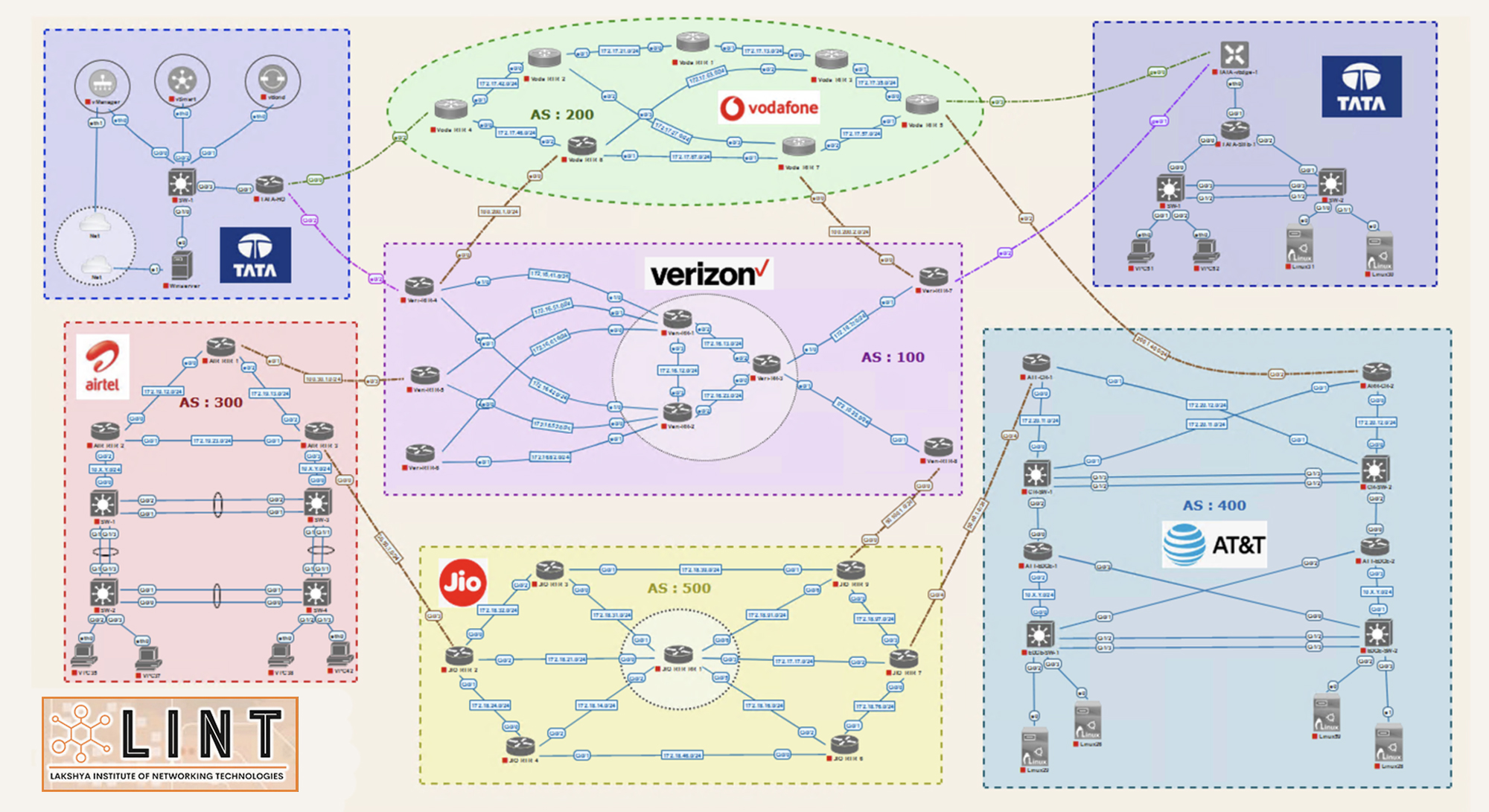Network Engineer Master Program
About the Course
Take your career to the next level with our comprehensive and innovative Networking Master’s Program. This program is meticulously crafted for mid-level engineers who are eager to deepen their technical expertise, gain mastery over the latest advancements in emerging networking technologies, and build the leadership skills needed to manage and execute complex, large-scale network projects. Whether you aspire to become a specialist in areas like cloud networking, or aim to lead dynamic teams in shaping the future of network infrastructure, this program provides the knowledge, tools, and opportunities to help you achieve your professional goals.

Courses covered in Network Engineer program:
CCR : Cisco Core Routing is designed for network engineers and IT professionals who want to gain advanced knowledge and hands-on experience working with OSPF, BGP, and MPLS technologies.
SD-WAN : SD-WAN (ENSDWI) helps you in designing, deployment, configuring, and manage the Cisco Software-Defined WAN (SD-WAN) solution in a large-scale network. You will gain experience on implementing control, data, and application-aware policies. This training also covers Cisco SD-WAN deployment, placement of controllers, how to deploy WAN Edge devices, quality of service (QoS), how to configure Direct Internet Access (DIA) breakout. You will also learn various Application Quality of Experience (App QoE) traffic optimization capabilities.
Palo Alto Firewall : Palo Alto course is designed to equip cybersecurity professionals with the knowledge and skills needed to effectively deploy, manage, and troubleshoot Palo Alto Networks security solutions. With the rise of cyber threats and attacks, organizations are placing a strong emphasis on network security. Palo Alto Networks, as a leading provider of next-generation firewall solutions, is likely to see contributing to job opportunities in this area.
Roles and Responsibilities of a Network Engineer:
Designing Network Infrastructure : Network Engineers are responsible for designing and planning the organization’s network infrastructure, including LANs, WANs, WLANs, and VPNs. They consider factors such as scalability, performance, security, and budget constraints when designing network architectures.
Implementing Network Solutions : Once the network design is finalized, Network Engineers implement and configure the necessary hardware and software components to bring the network infrastructure to life. This includes routers, switches, firewalls, load balancers, and other networking devices.
Configuring Network Devices : Network Engineers configure network devices such as routers, switches, firewalls, and access points according to the design specifications. They set up IP addresses, VLANs, routing protocols, security policies, and Quality of Service (QoS) parameters to ensure proper functionality and security.
Monitoring Network Performance : Network Engineers monitor the performance and health of the network infrastructure using network monitoring tools and protocols. They analyze network traffic, bandwidth utilization, packet loss, and latency to identify and troubleshoot issues proactively.
Troubleshooting Network Problems : When network issues arise, Network Engineers troubleshoot and resolve them in a timely manner to minimize downtime and service disruptions. They use diagnostic tools and techniques to identify the root cause of problems and implement appropriate solutions.
Ensuring Network Security : Network Engineers play a critical role in implementing and maintaining network security measures to protect against unauthorized access, data breaches, and cyber threats. They configure firewalls, intrusion detection/prevention systems (IDS/IPS), VPNs, and access control lists (ACLs) to enforce security policies and compliance requirements.
Managing Network Documentation : Network Engineers maintain accurate documentation of the network infrastructure, including network diagrams, configurations, IP address assignments, and inventory records. This documentation serves as a reference for troubleshooting, planning, and auditing purposes.
Want to talk with our Consultant ? 89393 11044 89396 11044 89398 11044
Book Your Free Demo



